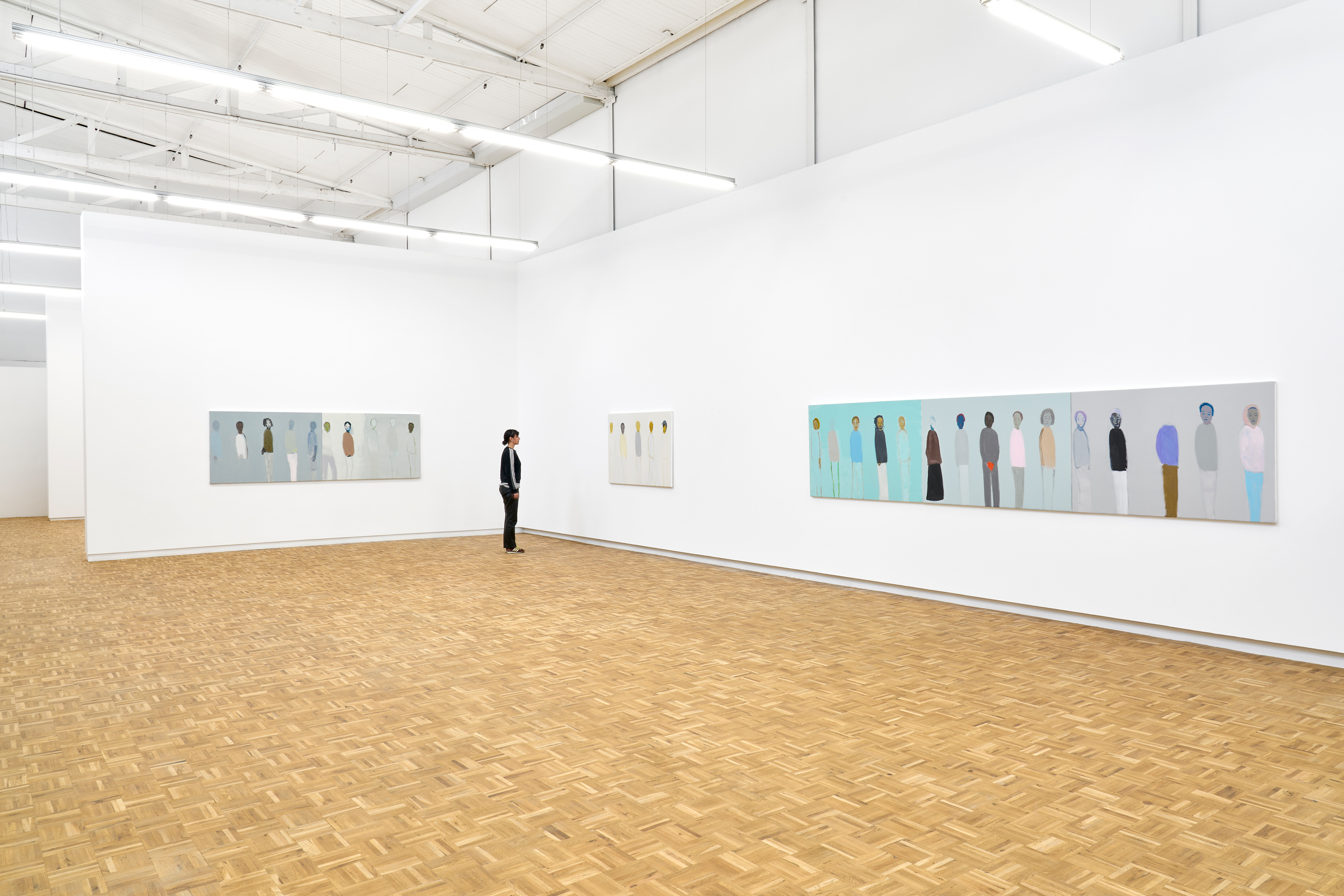





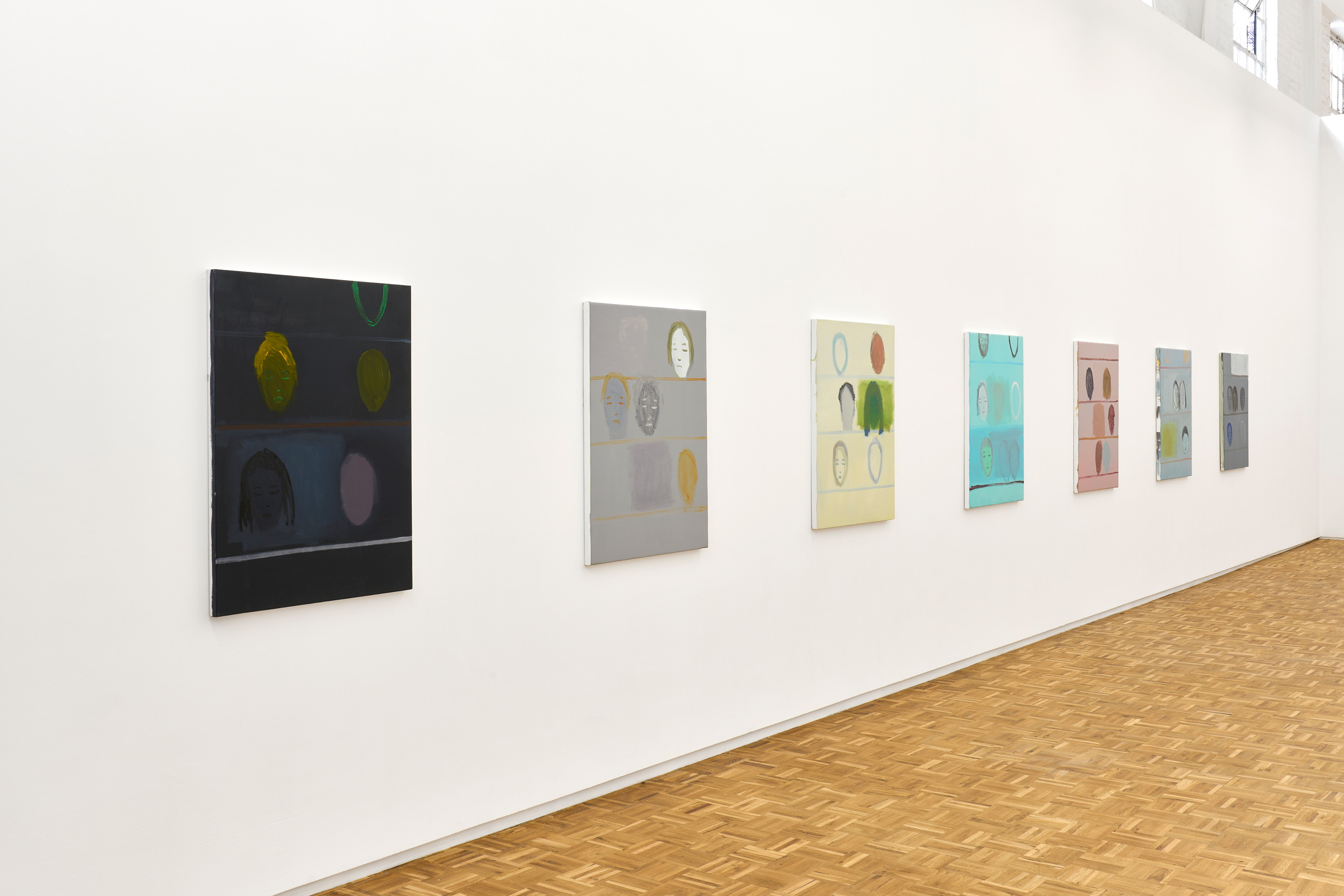



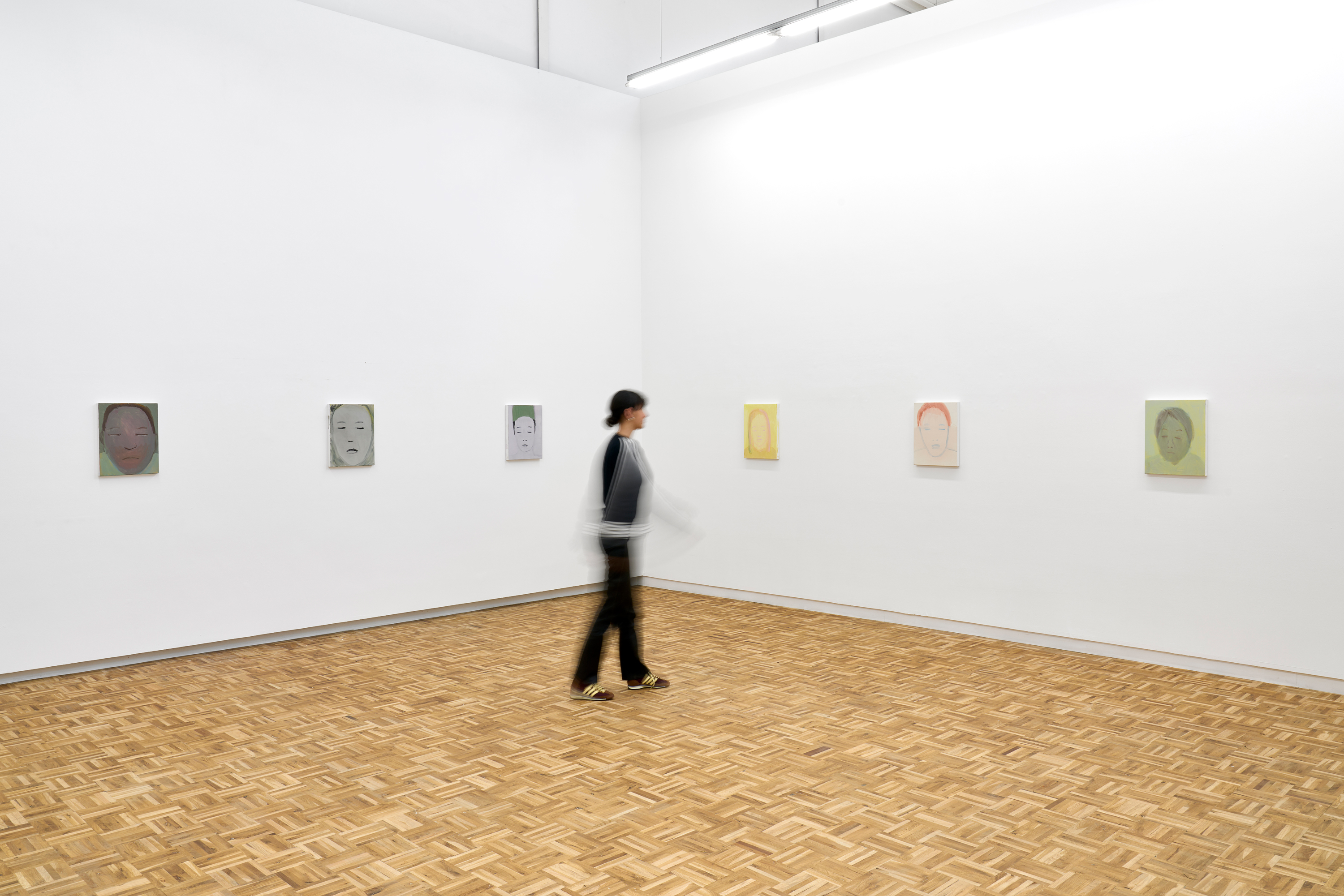
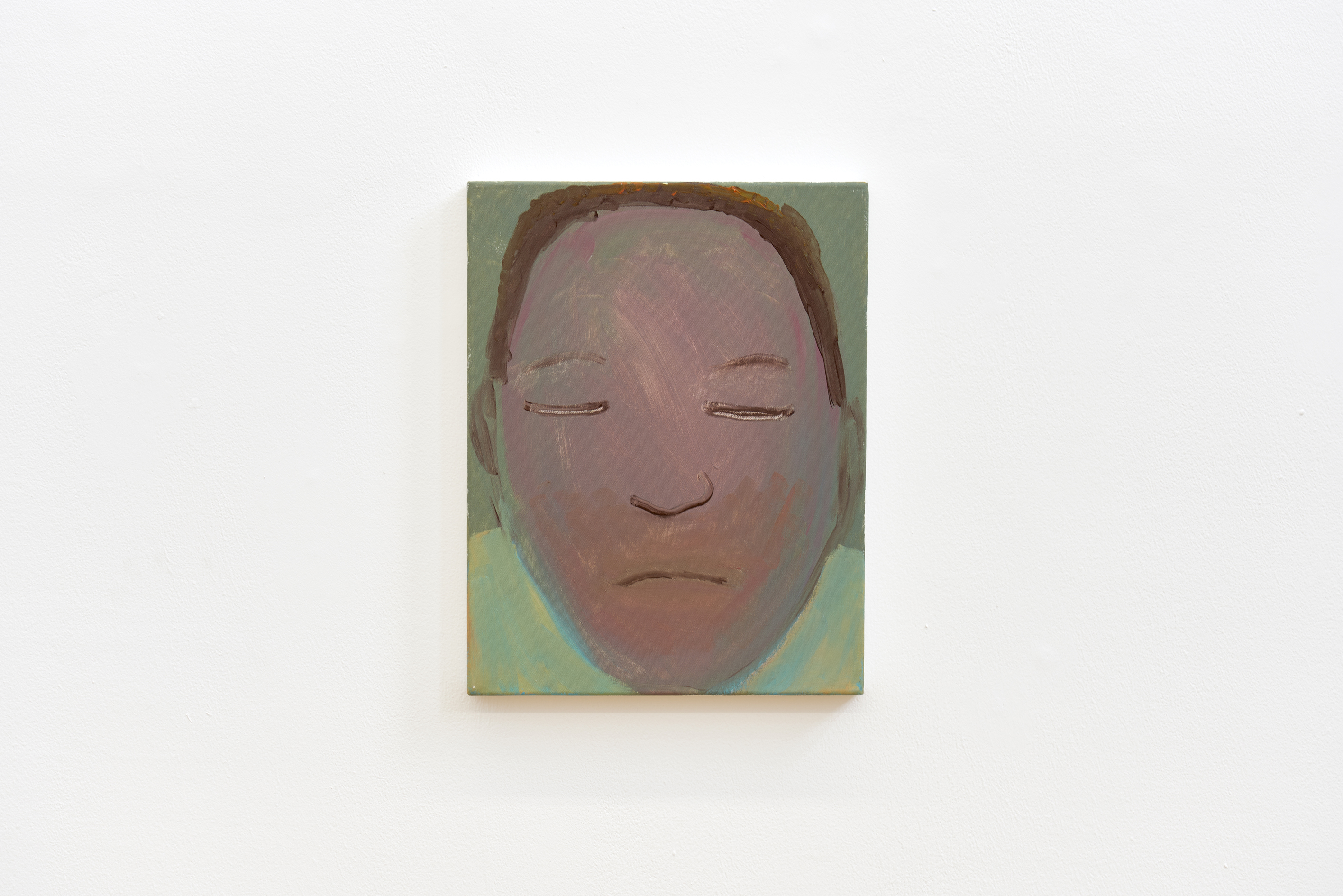

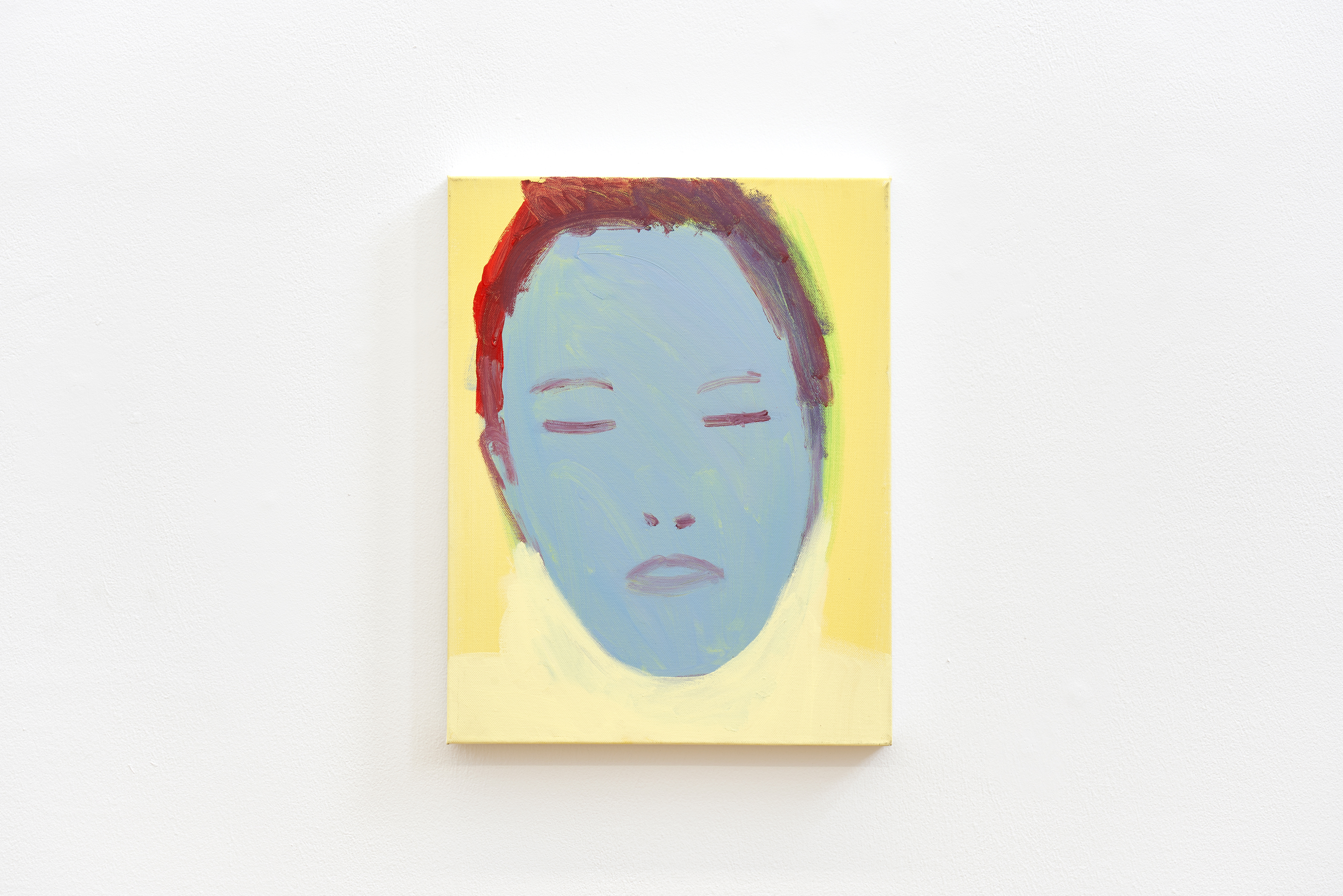
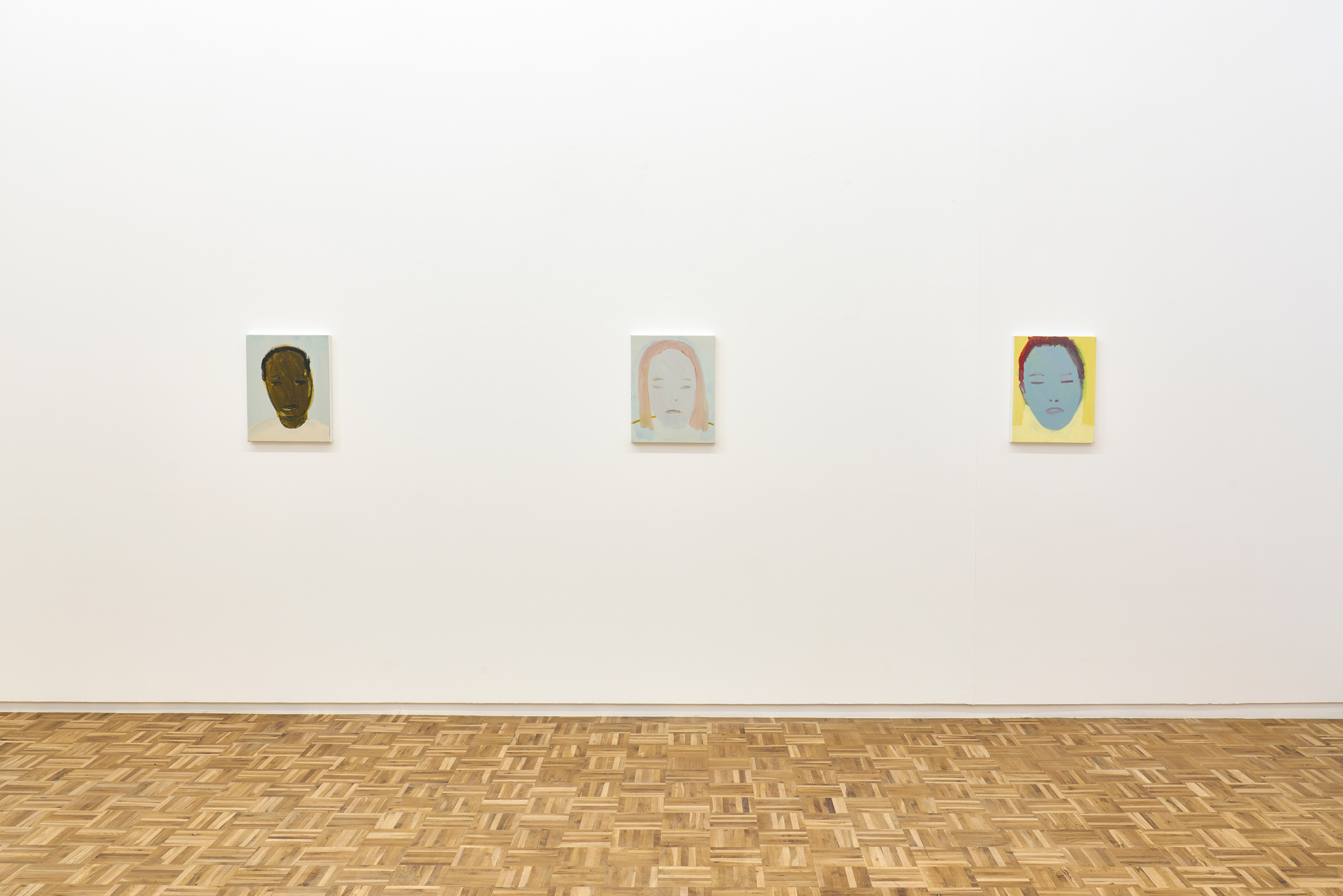
blank
is pleased to present Ceux qui sont partis et ceux qui sont restés, a solo exhibition by Gregory Olympio.
Produced in large part during the artist’s three month residency in Cape Town earlier this year, Ceux qui sont partis et ceux qui sont restés (‘those who left and those who stayed’) is Olympio’s third exhibition with the gallery. The impetus behind these works connects to Olympio’s particular sense of fixed placelessness; of having what he terms floating roots (racines flottante). Growing up in different places, the artist learned to shift between various contexts and cultures, absorbing and translating their paradoxes and commonalities. It is these shifting, interstitial spaces [between borders, languages and cultures] that inform his paintings.
Perhaps this unanchored state of being is reflected in the footless figures of his group portraits - no longer sitting as in previous works, Olympio’s imaginary subjects are now standing and appear to be inhabiting a transitional space of their own. Devoid of any other context, it’s unclear what his figures are moving towards or from, or whether they are simply waiting, queuing for something.
Elaborating on his Vases series, in which the artist’s experiments with composition and colour were further abstracted into the basic repetitive forms of vases or vessels on shelves, Olympio has introduced faces in place of the vases. He describes the way in which the composition reveals itself to him as an entirely intuitive exercise; the positioning of the ‘shelves’ is the only predetermined constraint. The rest of the painting is added and erased in layers until at last he arrives at a satisfactory formation. Olympio compares this process with that of Ifa geomancy - divination by means of the random placement of objects or patterns, the earliest versions of which originated in West Africa, where the artist first encountered the practice as a teenager.
Representing a new departure for the artist is the poignantly titled Je n’ai pas oublié - Nabile (‘I have not forgotten - Nabile’), a painting of Olympio’s late best friend. An act of remembrance, the intimate portrait was sketched from one the last photographs of his friend’s face. Working for the first time in this format, Olympio was subsequently inspired to produce a series of similarly close-cropped images of faces titled Ils sont apparus (‘They appeared’), in which the subjects - some of whom gaze out at us from the canvas, while most have their eyes closed against our gaze - are once again drawn from his imagination.
Olympio’s residency in Cape Town marked the first extended period of time the artist has spent on the African continent since leaving Benin in 2005. Uprooting himself from the familiarity of his Besançon studio, he sought to remove his practice from its usual context, re-situating it elsewhere, and adjusting to all the challenges and opportunities that presented. The artist’s adaptation to his new surroundings brought about an internal, emotional shift that we see reflected in the resulting body of work.
Born in 1986 in Lomé, Togo, Olympio graduated from the Beaux-Arts de Besançon in 2015. He has held four solo exhibitions to date, most recently Ligne (2022) and Lisière (2021) at blank projects. Group exhibitions include Common at A4 Arts Foundation, Cape Town, South Africa (2023), Respirer at La Box, Ensa Bouges, France (2021); Contemporary Benin at Fondation Donwahi, Abidjan, Côte d’Ivoire (2021) and Shaping the future at Arp Museum, Remagen, Germany (2019). Olympio lives and works in Besançon, France.
Produced in large part during the artist’s three month residency in Cape Town earlier this year, Ceux qui sont partis et ceux qui sont restés (‘those who left and those who stayed’) is Olympio’s third exhibition with the gallery. The impetus behind these works connects to Olympio’s particular sense of fixed placelessness; of having what he terms floating roots (racines flottante). Growing up in different places, the artist learned to shift between various contexts and cultures, absorbing and translating their paradoxes and commonalities. It is these shifting, interstitial spaces [between borders, languages and cultures] that inform his paintings.
Perhaps this unanchored state of being is reflected in the footless figures of his group portraits - no longer sitting as in previous works, Olympio’s imaginary subjects are now standing and appear to be inhabiting a transitional space of their own. Devoid of any other context, it’s unclear what his figures are moving towards or from, or whether they are simply waiting, queuing for something.
Elaborating on his Vases series, in which the artist’s experiments with composition and colour were further abstracted into the basic repetitive forms of vases or vessels on shelves, Olympio has introduced faces in place of the vases. He describes the way in which the composition reveals itself to him as an entirely intuitive exercise; the positioning of the ‘shelves’ is the only predetermined constraint. The rest of the painting is added and erased in layers until at last he arrives at a satisfactory formation. Olympio compares this process with that of Ifa geomancy - divination by means of the random placement of objects or patterns, the earliest versions of which originated in West Africa, where the artist first encountered the practice as a teenager.
Representing a new departure for the artist is the poignantly titled Je n’ai pas oublié - Nabile (‘I have not forgotten - Nabile’), a painting of Olympio’s late best friend. An act of remembrance, the intimate portrait was sketched from one the last photographs of his friend’s face. Working for the first time in this format, Olympio was subsequently inspired to produce a series of similarly close-cropped images of faces titled Ils sont apparus (‘They appeared’), in which the subjects - some of whom gaze out at us from the canvas, while most have their eyes closed against our gaze - are once again drawn from his imagination.
Olympio’s residency in Cape Town marked the first extended period of time the artist has spent on the African continent since leaving Benin in 2005. Uprooting himself from the familiarity of his Besançon studio, he sought to remove his practice from its usual context, re-situating it elsewhere, and adjusting to all the challenges and opportunities that presented. The artist’s adaptation to his new surroundings brought about an internal, emotional shift that we see reflected in the resulting body of work.
Born in 1986 in Lomé, Togo, Olympio graduated from the Beaux-Arts de Besançon in 2015. He has held four solo exhibitions to date, most recently Ligne (2022) and Lisière (2021) at blank projects. Group exhibitions include Common at A4 Arts Foundation, Cape Town, South Africa (2023), Respirer at La Box, Ensa Bouges, France (2021); Contemporary Benin at Fondation Donwahi, Abidjan, Côte d’Ivoire (2021) and Shaping the future at Arp Museum, Remagen, Germany (2019). Olympio lives and works in Besançon, France.